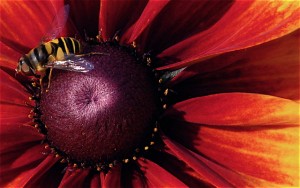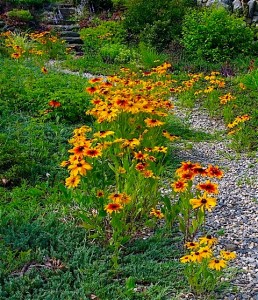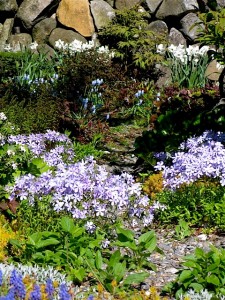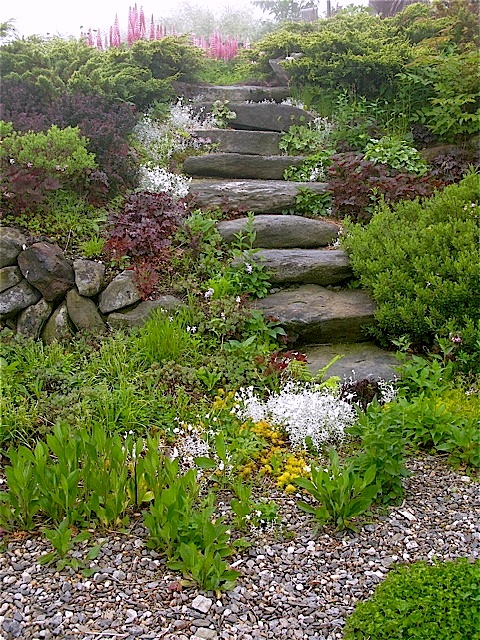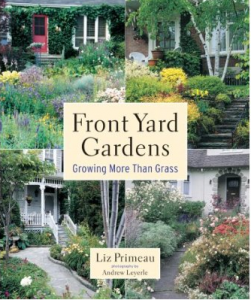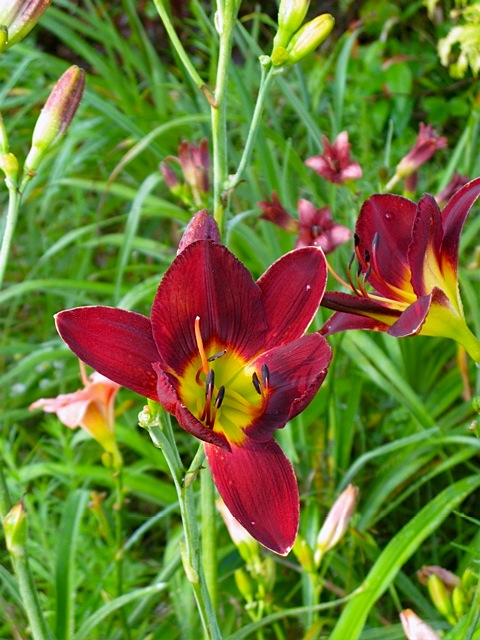Go a Little Less Green for the Environment: Rethink Your Lawn…
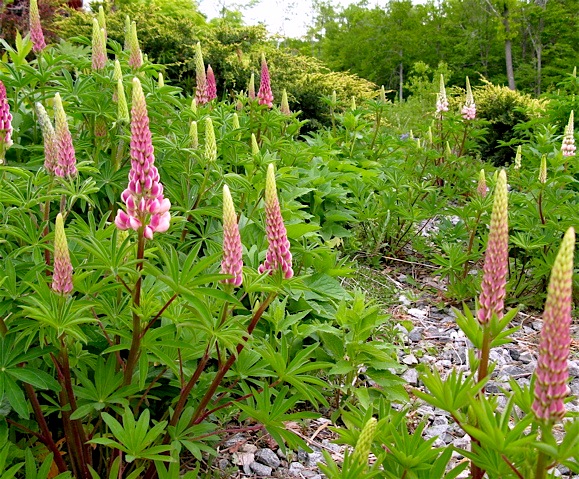 The Front Wildflower Walk in my Garden in June…
The Front Wildflower Walk in my Garden in June…
Lush, wide, green and rolling; in America we love our lawns. We like to sprawl out on the grass for a picnic, gather on the neighbor’s lawn for a game of touch football , and set up our folding chairs and tiki-torches in the backyard green for summer barbeques. I like doing these things too, and I have a small lawn of my own in Vermont. But it’s important to remember that lawns, from and environmental perspective, provide little support for the ecosystem. In fact, the tremendous amount of water, fossil fuel, fertilizers, herbicides, fungicides and insecticides used to maintain most suburban lawns makes our green-fixation downright irresponsible. And although green areas do reduce heat in cities, tightly cropped lawns do little to create habitat and provide food for birds, bees and the many other creatures sharing our world…
Rudbeckia hirta ‘Becky Mixed’, attracts a buzzing dinner guest…
So, how do we balance our desire for outdoor recreational spaces with environmentally friendly landscaping? When I design gardens for suburban homeowners, I like to suggest a compromise: keep some lawn in the backyard for play-space if it is truly used, and devote the front yard to nature. Usually, the front yard in an urban environment is no more than a strip of earth between the front door and the sidewalk or road. This part of the property is often dry and dusty, and it is rarely used for recreation. Sometimes the area between the house and street is steep and difficult, or even dangerous to mow. In many neighborhoods, roadside turf grass turns brown and unattractive by midsummer, (if it ever looks good at all). There are far more appropriate plants for such spaces; plants that will provide food and habitat for wildlife. In may areas, simply replacing grass with clover or another flowering ground cover is an excellent choice. For the more adventurous, a front garden filled with a mixed selection of native plants can be both beautiful and rewarding. Although there will be initial expenses and work involved, replacing front yard turf grass with more viable plantings can eventually save money and make a home more appealing and marketable as well as ecologically friendly.
For experienced gardeners, alternatives to turf grass will immediately spring to mind, but for novices the sea of choices and garden plan decisions can often seem overwhelming. If you are at a loss for ideas, Liz Primeau’s Front Yard Gardens is a great place to look for inspiration. This lovely paperback book is filled with hundreds of photographs of front yard garden designs, taken in a wide variety of climates. But more important, Primeau is quite practical, her book includes detailed plant lists and step-by-step plans to suit all climates, tastes and budgets. Usually I advise simple design plans and lower maintenance, native plants for new gardeners. Of course, what is considered a native plant will vary tremendously from one place to another, and this is where a bit of research comes in handy. It’s important that your garden suit your location. Perhaps one of your neighbors has a successful front yard garden. What plants grow well for them?  Most gardeners love to talk about plants and they tend to be very generous with advice. Also keep in mind that many communities have gardening clubs and plant swaps groups, and they usually welcome newcomers with a wealth of tips and information – sometimes even perennial divisions !  A small, neighborhood garden center is also a fantastic place to go for advice. Ask experienced, local nursery staff for some native plant recommendations. Be sure to mention that you would like to grow plants with open flowers and extended bloom periods to attract bees, butterflies and birds to your yard. If you are new to gardening, remember to start with a modest plan, and expand your garden as you develop confidence and success…
Why mow on a dangerous slope ? When terraced with natural stone, this ‘problem area’ in my garden became a lush, mixed border filled with shrubs, ground covers and perennials, blooming from early spring to late autumn…
Purchase Liz Primeau’s Front Yard Gardens( 2003 ed.): from Barnes and Noble
Purchase Liz Primeau’s Front Yard Gardens (new 2010 ed.): from Amazon
An excellent choice for beginners to more advanced gardeners, mixed daylily gardens cover ground, (even those tough to maintain slopes), and bloom from early summer through frost. Expand the early spring bloom time by adding bulbs in the fall. This beautiful daylily combination in my front garden is from White Flower Farm
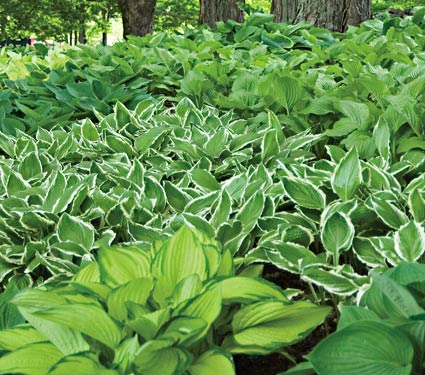 Hosta are a good choice for new gardeners with shady outdoor spaces. Hosta produce white to lavender blossoms, providing pollen for hummingbirds, butterflies and bees, and cool summer shade for other living creatures. Early blooming bulbs can be planted between hosta in autumn, to extend a landscape’s bloom period. The image above is from White Flower Farm
Hosta are a good choice for new gardeners with shady outdoor spaces. Hosta produce white to lavender blossoms, providing pollen for hummingbirds, butterflies and bees, and cool summer shade for other living creatures. Early blooming bulbs can be planted between hosta in autumn, to extend a landscape’s bloom period. The image above is from White Flower Farm
***
This article was originally written by Michaela (TGE), for The Honeybee Conservancy Blog as part of a volunteer, collaborative effort. Please visit the HBC site to learn more about this important cause, and how you can do more to help support and protect earth’s pollinators.
Article and photographs, (with noted exceptions), © 2010, All Rights Reserved : Michaela at The Gardener’s Eden
All content on this site is the property of The Gardener’s Eden and may not be used or reproduced without written consent. Please do not use anything on this site without permission
***
